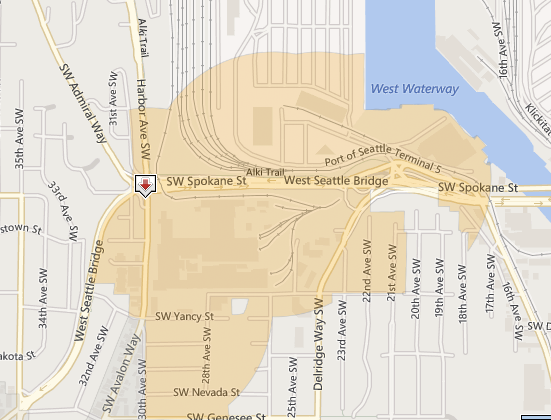Parking Exemption in Transit Areas Under Threat
There is yet another challenge to housing supply and affordability in the city: the collapse of the City’s reduction of parking requirements in areas that have frequent transit. The letter below is in response to a serious impact on many, many housing projects in the city. Until now, builders of housing could use the City’s GIS map to calculate the average headways of transit to determine the frequency of transit. The Hearing Examiner decision throws doubt on every project in the city trying to reduce on site parking and thus the costs of construction, and, in the end housing price.
——————————–
February 10, 2015
Dear Mayor Murray and Councilmember O’Brien,
Last year the Hearing Examiner made a decision on a project in West Seattle (Parking Decision) that is having profound impacts on housing throughout the city. The decision affects all projects outside urban centers or station overlay areas proposing less parking for residents. These projects typically qualify for less (or, in urban villages, no) parking for most uses because they are served by “frequent transit.” Essentially, the frequent transit provision requires that the development must be within a quarter mile of a street with transit headways of not more than 15 minutes for 12 hours per day six days a week and not more than 30 minutes 18 hours per day seven days a week.
In 2012, DPD issued Director’s Rule 11-2012 (DR2012-11) that explained this frequent transit requirement. Among other things, this Director’s Rule explained that the frequent transit requirement is met if the average time between the buses (or other transit) complies with the headway requirement. This averaging is logical and reasonable in relation to Metro scheduling. A good example of this is the Rapid Ride D Line. At the Ballard stop this route has headways from 5:05 a.m. until after 9:00 p.m. of 15 minutes or less – with many headways of less than 10 minutes – except for one 17 minute headway around 4 p.m.[1]
The Examiner’s decision disallows averaging in determining frequent transit.
The decision reads, in part,
Had the Council intended that headways be averaged, it could have inserted the word “average” in two places within the definition to indicate that intent… [d]oing so would change the clearly stated meaning and the impact of the definition [of frequent transit].This can be accomplished only through legislation.
This elimination of averaging means that many projects which are clearly in areas that are very well served by transit do not qualify for this parking exception. This makes these projects, most of which are housing projects, infeasible.[2]
There are many factors which affect transit headway, including, I assume, anticipated traffic congestion during peak hours and transit-driver required breaks. Under the Hearing Examiner’s interpretation of the frequent transit requirement, one headway of 16 minutes during the requisite 12 hour period or one headway of 31 minutes during the requisite 18 hour period will disqualify that route from providing frequent transit service even if the average headway is less than 15 (or 30) minutes.
A minute here and there, in an 18 hour period, causes a project to fall outside the frequent transit requirement under the Hearing Examiner’s ruling. This is illogical and inconsistent with broader City policy to support less parking and more transit use, and will make many projects infeasible. In the end, this has the potential to reduce housing supply by hundreds of units and increase housing costs to provide unused parking.
We ask that the Council quickly pass legislation that clarifies the averaging issue as the Examiner suggest in order to preserve housing affordability in key neighborhoods in our city.
Sincerely,
Roger Valdez
[1]This is not an outlier. There are numerous other routes that have similar patterns.
[2] Additionally the Hearing Examiner disallowed the use of the GIS map for determining whether a project qualifies for a parking exemption for frequent transit, which should also be addressed in legislation.


